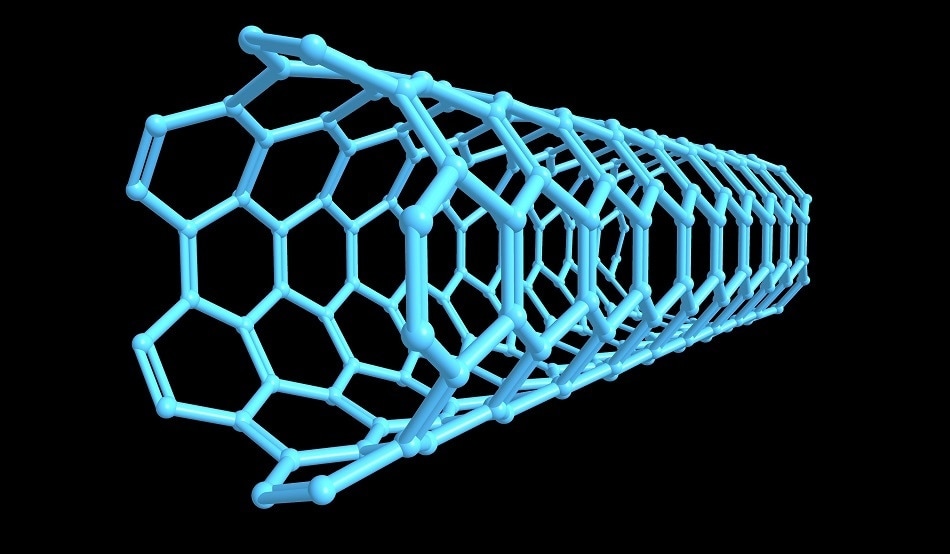
Image Credits: Shutterstock / Raimundo79
Different carbon nanoparticle allotropes, be it graphite nanoplatelets or carbon nanotubes, are promising candidates as filler materials for polymer composites. However, traditional composites utilizing such carbon materials have always suffered from a low percolation threshold due to synergistic effects. A team of researchers from Ukraine have employed a series of Monte Carlo simulations to determine how the composition of the synergistic effects of various carbon allotropes affect the percolation threshold, and how it can be enhanced.
Various allotropes of carbon are well known candidates as filler materials for polymer composites. To achieve a percolating threshold, the filler materials are required to possess excellent electrical properties with a specific shape and high aspect ratio and responsible for a composite’s mechanical, thermal and electrical properties. For both carbon nanotubes (CNTs) and graphite nanoplatelets (GNPs), only a small amount is required to achieve this.
Hybrid composites consisting of both CNTs and GNPs in a polymer matrix have been researched, but despite lowering the cost and improving the performance, they give contradictory evidence about many of the parameters from the experimental evidence alone. As the size and ratios are the most important factors, ambiguity surrounding the length and volume parts of the filler materials is a big problem, especially when researchers want to determine an optimal composition.
Specific ratios of filler CNT, filler GNPs and the polymer matrix are known to produce synergistic enhancements of the physical properties and reduce the electrical percolation threshold of such composites. The ratios are very sensitive and are easily affected by the morphology of the filler materials. It has been thought that other morphologies or different high aspect ratios within the composite could eliminate synergistic effects attributed to the change in percolation thresholds.
The percolation threshold is a mathematical principle that relates to the formation of long-range connectivity in random systems. Below the threshold, a connected system does not exist; above it, there is a large ordered system. For composites, the formation of a large ordered system is essential for material integrity and stability.
The researchers employed a 3-dimensional (3D) Monte Carlo model and used C++ and Java environments to predict the percolation threshold of the polymer composites. They modeled the filler materials as a 3D network of finite sites in random positions and the polymer matrix as a 3D cubic representative volume element (RVE). The researchers determined a series of properties and parameters, including the critical filler volume fraction (percolation threshold). They also investigated the substitution of CNTS with more GNPs into the matrix due to their lower cost.
The researchers found that the enhancement of the percolation threshold relies heavily on the relative aspect ratio for the filler molecules. The researchers deduced this to the formation of bridges between the different filler components. The synergism was also found to be at its maximum when the aspect ratio of the CNTs and GNPs are equal. It was also found to completely disappear when the aspect ratio of the filler molecules has an aspect ratio that is more than double the other.
The researchers also found that the size of the filler particles had almost no bearing on the percolation threshold of the composite and is a negligible factor for the synergistic effects. The particles of one filler molecule can also be substituted for particles of another filler molecule if the aspect ratios are identical, or almost identical. Based on the last discovery, the researchers even managed to substitute up to 80% of the CNT particles with GNPs, without any significant loss in the percolation threshold.
The last discovery is perhaps the most important as it opens up the possibility of experimentally creating polymer composites with a higher GNP content (without damaging the functionality of the composite) which will invariably be cheaper and provide a greater potential for commercial applications due to possessing a greater cost-effectiveness.
You can read the entire article here.

This information has been sourced, reviewed and adapted from materials provided by SpingerOpen.